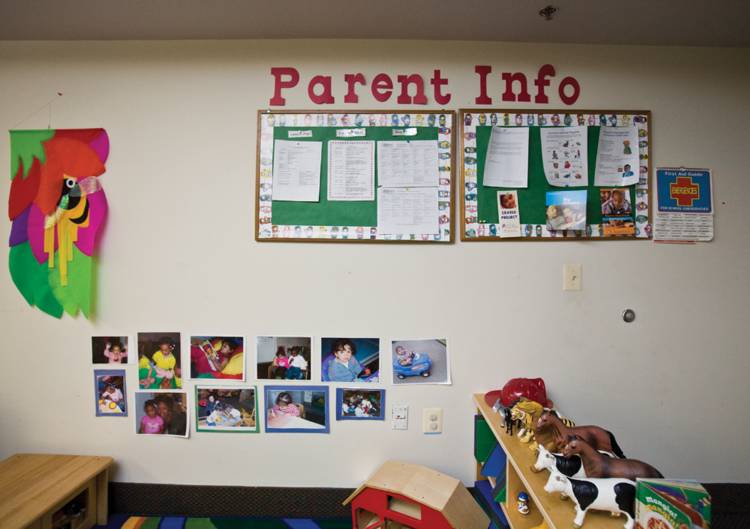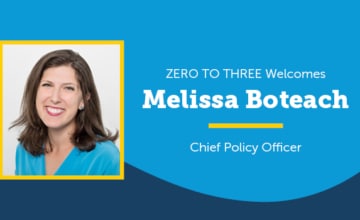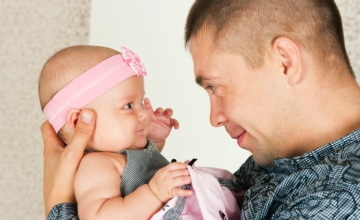Jessica Dym Bartlett, Child Trends, Bethesda, Maryland

Abstract
Trauma early in life can significantly impair children’s development, mental health, and learning, placing them at risk for poor mental and physical health problems throughout life. Young children experience trauma more often, and are more vulnerable to its harmful effects, than older children. Early childhood education (ECE) programs regularly work with traumatized children and their families, often without adequate training in trauma-informed care (TIC). Implementing TIC in ECE can increase the chances that young traumatized children recover, thrive, and enter kindergarten ready to learn. This article discusses specific approaches to TIC in ECE and related implications for the field.
Two-year-old Imani entered her new classroom clinging to the leg of her foster mother, with whom she had been placed 1 week earlier. After peering around the room for several minutes, she spotted the breakfast table and ran over to grab the cereal container. She was so focused on eating she hardly noticed her foster mother saying goodbye. After a third bowl of cereal, a teacher gently suggested she “take a break to play.” Imani fell to the ground in tears. For the remainder of the morning, she flitted about, unable to settle on an activity. But when the food cart paused by the hall window, Imani’s attention became highly focused on the cart—and when she was not allowed to leave the classroom to get to it, her behavior escalated. She screamed, pushed, and tried to bite anyone that came near her, and wriggled free from teachers who tried to calm her. By lunchtime, Imani’s teachers were emotionally exhausted, and out of strategies to distract, engage, or comfort her. Imani’s foster mother was asked to take her home, and the director called me, an infant and early childhood mental health consultant. After meeting with her teachers, foster family, and a child protective services worker, we learned Imani had been severely neglected in her biological home, often going without food. By forming close partnerships with the adults in Imani’s life, and with new understanding of the trauma reminders (e.g., food) that triggered Imani’s challenging behaviors, we were able to develop and implement a successful trauma-informed plan to help her heal.
Stories like Imani’s (name changed for privacy) can be found every day in early childhood education (ECE) settings. Compared to older children and adolescents, young children are disproportionately exposed to trauma, defined here as the perception of events or circumstances as extremely frightening, threating, or harmful to one’s physical or emotional safety (Bartlett & Sacks, 2019; National Child Traumatic Stress Network [NCTSN], n.d.). Estimates of the prevalence of exposure to potentially traumatic events prior to kindergarten range from 26–70% of children in the United States, with those who are Black, Indigenous, and People of Color and living in poverty experiencing the highest rates (Briggs-Gowen et al., 2010; Clarkson Freeman, 2014; Jimenez et al., 2016). Moreover, young children are at particularly high risk for exposure to some of the most common causes of trauma, including child abuse and neglect, domestic violence, and unintentional injuries (Children’s Bureau, 2020; Fantuzzo & Fusco, 2007; Grossman, 2000). For example, children under 3 years old have the highest rates of child maltreatment, comprising more than one quarter (28%) of all victims (Children’s Bureau, 2020). Remarkably, these figures underestimate child trauma, as some of the most widely cited population-level surveys do not account for exposure to many common and harmful social determinants of health that lead to trauma in young children (e.g., extreme poverty, homelessness, natural disasters, pandemics, painful injuries and medical conditions; Bartlett, 2020; McEwen & Gregerson, 2019).
In the last 2 decades, direct service providers and researchers across fields of practice have shown increased understanding of the impacts of trauma in the first few years of a child’s life. This growing awareness has included increased attention to developing and implementing trauma-informed interventions in ECE settings. To help support ECE programs and staff in addressing the needs of traumatized infants, toddlers, and preschoolers, this article describes the unique impacts of trauma on young children and their related needs, and it provides examples of trauma-informed care (TIC) that can be implemented in ECE to increase young children’s chances of resilience—the dynamic process of positive adaptation in the context of significant adversity (Luthar et al., 2000).
Why Address Trauma in ECE Settings?
Almost half of all infants and toddlers and nearly two thirds of preschool-age children in the United States participate in ECE (Digest of Education Statistics, 2016; ZERO TO THREE, 2017); ECE, or “nonparental care that occurs outside of the child’s home,” includes home-, center-, and school-based settings, Head Start and Early Head Start programs, and prekindergarten programs (National Academies of Sciences, Engineering, and Medicine, 2019, p. 19). Given the estimates of early trauma exposure noted here, it is certain that most, if not all, ECE programs routinely work with traumatized children.
High-quality, comprehensive ECE programs with a strong focus on family engagement (e.g., Head Start/Early Head Start; HighScope Perry Preschool Project; Abecedarian Project) can provide critical supports to traumatized children and their families, especially those living in poverty. Evidence that demonstrates the benefits of ECE include: (1) promoting young children’s social–emotional development, (2) protecting children against poor health and mental health outcomes later in life, (3) preventing and reducing the negative effects of early trauma (Green et al., 2020; Yoshikawa et al., 2012), and (4) lowering downstream costs to society (e.g., child welfare, juvenile justice) while offering a high rate of return on investments (Conti et al., 2016).
Unfortunately, ECE providers, leaders, and other stakeholders often lack access to education, training, and supervision on the impacts of child trauma and how to promote resilience among its youngest victims. Concomitantly, ECE programs are expected to offer high-quality care and opportunities to learn in the context of managing children’s challenging traumarelated behaviors, which can take a toll on provider well-being (Bullough et al., 2012). A build-up of stressors in ECE providers’ lives, such as the many adversities related to the COVID-19 pandemic, may further compromise their mental health and quality of care they provide (Bartlett & Vivrette, 2020; Smith & Lawrence, 2019).
In my own work as a mental health consultant, I found that some ECE providers and program leaders were eager to address mental health difficulties such as trauma, while others were more reluctant to take on this role. Even the term mental health, when applied to very young children, can be confusing and off-putting to ECE staff, who are more familiar with the term social–emotional development. Furthermore, avoiding painful experiences is a natural human response, and working with traumatized children is surely emotionally painful. Coping with children’s trauma can also trigger difficult memories and feelings in providers who have their own histories of trauma (Lieberman, 2004; Lieberman & Van Horn, 2009).
In addition, pervasive societal myths about early development, perhaps grounded in avoidance and hope, also interfere with attention to early trauma. These include the belief that babies do not notice, fully experience, or remember traumatic events, or that they inevitably “bounce back” from adversity. In the aftermath of a catastrophic event, for example, it is not uncommon to hear adults comforting each other by asserting that “Children are resilient.” In reality, young children—even infants and toddlers—are skilled observers of people and environments, and infants as young as 3 months have been found to show symptoms of traumatic stress (Gaensbauer, 2002).
Having taught in ECE classrooms for a brief period and deciding that being a mental health consultant was a far less stressful occupation, I have the deepest respect for ECE providers and the difficult work they do every day. I understand how emotionally taxing it can be to care for children in distress while simultaneously bearing responsibility for an entire group of children. It is essential, then, to validate how challenging this work is while still holding space for the notion that everyone in ECE has a role to play in the protection, recovery, and mental health of young children who experience trauma (Bartlett & Smith, 2019).
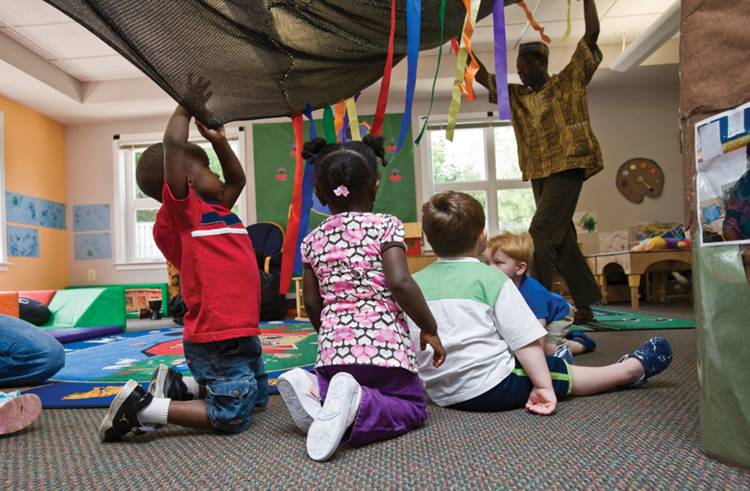
Unfortunately, early childhood education providers, leaders, and other stakeholders often lack access to education, training, and supervision on the impacts of child trauma and how to promote resilience among its youngest victims. Photo: Stephen Bobb
Impact of Trauma on Young Children and Their Families
Exposure to significant adversity, especially when severe and long-lasting, can lead to trauma in young children by overwhelming their ability to cope, disrupting early brain development, and derailing important developmental tasks, such as the formation of secure attachments with caregivers, self-regulation, and learning (NCTSN, n.d.). Early trauma is fundamentally developmental and relational (Scheeringa & Zeanah, 2001). Children’s response to trauma depends in large part on their age and developmental stage, the presence or absence of an emotionally available parent or caregiver, and the nature of the traumatic experience (e.g., severity, chronicity, context; NCTSN, 2010). Common traumatic stress symptoms in young children include clinginess; excessive crying; inability to be soothed; severe separation anxiety; avoidance of people, places, or experiences that are reminders of traumatic events; indiscriminate attention-seeking from adults; regression in developmental tasks they already mastered; repetitive play with themes from traumatic events; and difficulty feeding/eating, sleeping, and toileting. They also may develop cognitive symptoms (e.g., difficulties with memory, concentration, and learning) and physical symptoms (e.g., stomach aches; NCTSN, 2010).
From a developmental perspective, trauma that occurs in a child’s first few years of life is unique. During this sensitive period of development, the brain forms over one million new neural connections per second. Genes provide the initial blueprint for development, but early experiences are influential in shaping the developing brain (National Scientific Council on the Developing Child, 2004). These experiences occur through dynamic interactions with people and environments (Bronfenbrenner & Morris, 2006). Highly stressful or traumatic interactions, particularly within children’s immediate environment (e.g., the parent/caregiver–child relationship), can adversely impact neurodevelopment and gene expression, biologically embedding trauma and placing young children at risk for mental and physical health problems throughout the life course (Shonkoff et al., 2009).
When a young child experiences trauma at the hands of a primary caregiver (e.g., abuse and neglect), or when both the child and primary caregiver have suffered from trauma (e.g., domestic violence, intergenerational abuse and neglect), consistent nurturance and safety—the most powerful predictor of positive child outcomes—may be compromised (PatHorenczyk et al., 2017). One of the most pernicious effects of trauma is interference with the formation of healthy attachments with parents and other primary caregivers (Scheeringa et al., 2005). From a relational viewpoint, insecure or disorganized attachments with primary caregivers cause significant emotional distress for the infant or young child and may undermine their capacity to regulate stress or form healthy relationships, while increasing the chances of vulnerability to additional trauma (Fonagy et al., 2002). Interventions to address early trauma therefore must closely attend to these central relationships.
The impact of trauma tends to be most severe and pervasive when it begins early in life, takes multiple forms, and involves the caregiving system (D’Andrea et al., 2012), a pattern often referred to as complex trauma (Wamser-Nanney & Vandenberg, 2013). Imani, whose story opens this article, suffered from complex trauma. She was exposed to alcohol, drugs, and nicotine, both prenatally and postnatally; endured chronic emotional and physical neglect by her biological mother (who was herself a victim of family and relationship violence); and was separated from her mother when child protective services placed her in foster care. Given the context of Imani’s traumatic experiences—her relationship with her mother—my work with her teachers, foster family, and child protective services worker to support Imani necessarily included attention to the dyad and family system.
Impact of Trauma on ECE Programs
The harmful effects of trauma inevitably find their way into ECE programs, as very young children express traumatic stress reactions in one of the few ways they can—through behavior. Early trauma also exerts an impact on ECE by impeding a child’s ability to learn and through trauma reactions that lead to challenging behaviors which in turn disrupt the larger group of children (Smith & Granja, 2017). The extent of the problem has been well-documented in research on pre-kindergarten expulsion and suspension. More than 250 preschoolers are suspended every day in the United States, typically as a response to their challenging behavior (Malik, 2017). At the state level, ECE expulsion rates are up to 13 times higher for young children compared to those in kindergarten through high school (Gilliam & Shahar, 2006). Black children, in particular, bear the burden of this misguided response. They are expelled more than 3 times as often as their White peers and represent 47% of preschool children who are suspended, despite comprising only 19% of children in preschool (Meek & Gilliam, 2016).
Working with young children who are traumatized also may lead to secondary traumatic stress (STS), or psychological stress from firsthand exposure to the trauma experiences of others (NCTSN, n.d.). Also known as compassion fatigue, STS is progressive and can rise to the level of post-traumatic stress disorder among caregivers. In addition, STS may trigger trauma reactions in ECE providers that limit their ability to provide sensitive and responsive care (Perry, 2014). Although research is limited on STS in ECE, studies suggest it occurs more frequently among providers who are new to the field (i.e., having less than 5 years of experience; West et al., 2018). Taken together with being paid meager wages in an underappreciated profession, it is no wonder that ECE providers have high rates of mental and physical health problems, burnout, and turnover; approximately one third of the workforce turns over annually. These factors impede the quality and continuity of care in ECE (Brandon & MartinezBeck, 2006; Whitaker et al., 2013). However, even when the odds are stacked against young children and their caregivers, young children can thrive. By using TIC, high-quality ECE programs and the community partners with whom they collaborate can shift children’s odds in a positive direction.
Defining Trauma-Informed Care
Although the literature on TIC has grown considerably over the past decade, few resources or studies focus on trauma-informed approaches in ECE, and even fewer offer concrete, actionable, evidence-informed recommendations for programs and staff. This is a critical gap, as typical practices may not only be ineffective, but may even trigger or re-traumatize children exposed to trauma. For example, an adult who gently places a hand on a child’s shoulder to help calm him may inadvertently trigger a trauma reaction if the child has been physically abused.
TIC is a term used to describe a broad range of practices and policies for promoting the well-being of children, adolescents, and adults who have experienced trauma. As a result, identifying precisely what it entails in ECE can be difficult. However, one of the most commonly used definitions, developed by the NCTSN (administered by the Substance Abuse and Mental Health Services Administration), offers a good starting point:
A child and family service system is one in which all parties involved recognize and respond to the impact of traumatic stress on those who have contact with the system, including children, caregivers, staff, and service providers. Programs and agencies within such a system infuse and sustain trauma awareness, knowledge, and skills into their organizational cultures, practices, and policies. They act in collaboration with all those who are involved with the child, using the best available science, to maximize physical and psychological safety, facilitate the recovery or adjustment of the child and family, and support their ability to thrive. (NCTSN, 2016, p.1).
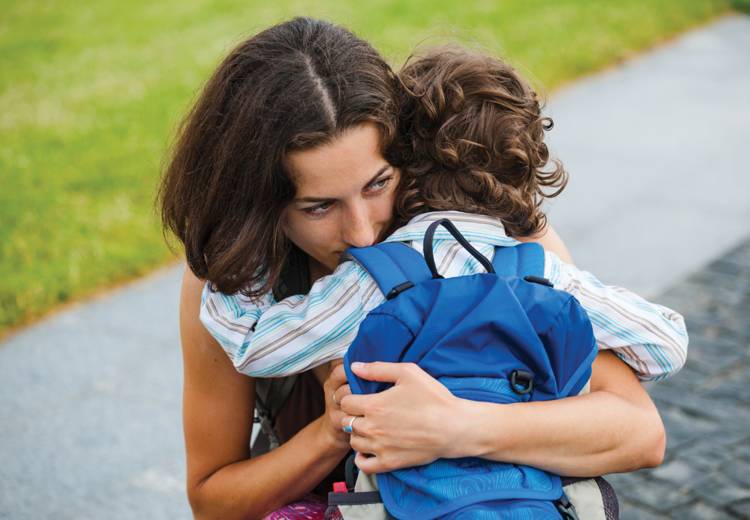
The harmful effects of trauma inevitably find their way into early childhood education programs, as very young children express traumatic stress reactions the only way they can—through behavior. Photo: zhukovvlad/shutterstock
In addition, the Substance Abuse and Mental Health Services Administration (2014) has identified four key assumptions inherent to TIC (“The Four Rs”):
A program, organization, or system that is trauma-informed realizes the widespread impact of trauma and understands potential paths for recovery; recognizes the signs and symptoms of trauma in clients, families, staff, and others involved with the system; and responds by fully integrating knowledge about trauma into policies, procedures, and practices, and seeks to actively resist re-traumatization.
Trauma-Informed Care in Early Childhood Education Settings
While there is a burgeoning literature on TIC and its implementation in ECE settings, there is little evidence on optimal approaches or how they can be tailored to the diverse backgrounds of families who use nonparental care. Set within the broader context of early childhood developmental theory, however, TIC research suggests that traumatized children have some needs similar to those of all children, including safe, stable, and nurturing relationships and environments (National Center for Injury Prevention and Control, 2014). But they also require more intensive care and attention to (1) family functioning and parenting skills, (2) the development of self-regulation and the executive function skills needed for learning and school readiness, and (3) support for social–emotional skill development. Furthermore, ECE providers need adequate knowledge and understanding of how to identify and reduce trauma and related triggers, and how to help children learn to cope and flourish (Bartlett & Smith, 2019). Guidance on how to support children’s development of social–emotional and self-regulation skills are incorporated into several evidencebased curricula in ECE, such as the Pyramid Model (Hemmeter et al., 2015) and Incredible Years (Webster-Stratton & Reid, 2003), which can provide a strong foundation for TIC, though they do not constitute comprehensive TIC.
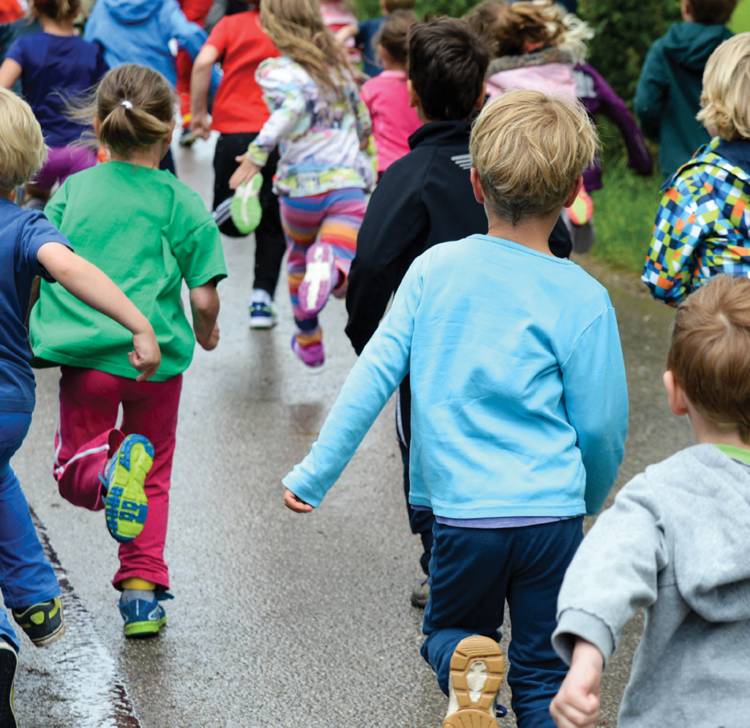
Improving the lot of young children who experience trauma is probable when early childhood education programs and their community partners act early and comprehensively. Photo: zandyz/shutterstock
Learn More
Helping Young Children Who Have Experienced Trauma: Policies and Strategies for Early Care and Education Child Trends, link
Head Start Heals Campaign
Head Start Early Childhood Learning & Knowledge Center (ECLKC), link
Services for Families of Infants and Toddlers Experiencing Trauma: A Research-to-Practice Brief
B. Jones Harden (2015), link
Secondary Stress
National Child Traumatic Stress Network, link
Attachment, Trauma, and Reality: Creating Trauma-Informed Systems for Infants, Toddlers, and Their Families [VIDEO]
ZERO TO THREE, link
A number of promising, evidence-informed approaches to TIC in ECE, specifically, have emerged in recent years. These include at least three broad strategies: (1) directly integrating TIC services into ECE programs; (2) building partnerships between ECE and community service providers to facilitate the identification and treatment of early trauma; and (3) offering professional development opportunities to increase capacity for TIC among the ECE workforce (Bartlett & Smith, 2019). Specific examples of these approaches are summarized in Table 1.
Of note, few existing TIC approaches have been tested with fathers, the entire family system, or with children who are Black, Indigenous, or People of Color. Adaptation of current TIC approaches and development of new ones focused on these populations is critically needed, as is rigorous evaluation to establish a strong evidence-base. Increasing ECE, mental health, and other services systems capacity to use TIC with young children and their families is also essential, as the United States cannot currently meet the demand for trauma-informed services and treatment, and even the most severely traumatized infants and toddlers are often placed on long waiting lists for treatment. This public health crisis has worsened during the COVID-19 pandemic (Tanner, 2020).
Recommendations for Trauma-Informed Care in Early Childhood Education
As outlined in prior work (Bartlett & Smith, 2019), evidence to date suggests that ECE settings will be most successful in addressing early childhood trauma by implementing TIC. Overall, successful TIC in ECE will require:
- Strengthening ECE workforce capacity to provide TIC. This effort will necessitate offering professional development—not a single training, but rather comprehensive, ongoing professional development to ensure that providers recognize early trauma, understand its impact, shift practices to avoid trauma triggers and re-traumatization, and gain the necessary knowledge and skills for supporting families in which young children experience impaired caregiving.
- Establishing partnerships in the community and systems for screening, referral, and treatment. This includes partnerships with community mental health programs and infant and early childhood mental health providers, early intervention, home visiting, primary care, and programs that reduce family poverty and increase economic mobility so families can meet their basic needs.
- Establishing internal screening practices for (1) identifying social–emotional and behavioral problems related to exposure to trauma, (2) early learning and developmental strengths and needs, (3) parent and family functioning, and (4) risk and protective factors in families’ lives. Policies and practices for identifying trauma, making appropriate referrals to community services, and ensuring families’ access to those services, should be clearly defined and implemented. Addressing barriers to accessing care is also essential.
- Attending to staff self-care at the organizational level to reduce secondary trauma, burnout, and turnover among ECE providers. Self-care practices should be integrated into program policies and practices (e.g., breaks, mindfulness, exercise) to ensure their use and to avoid placing additional burden on staff.
- Prohibiting suspension and expulsion of young children, whose challenging behaviors indicate the need for additional support, not discontinuity of care.
- Increasing efforts to promote high-quality care, which benefits all young children, but especially those who have experienced trauma.
Table 1. Example Strategies of Trauma-Informed Care for Early Childhood Education Programs
| Psychosocial treatment model combines elements of cognitive-behavioral, attachment, humanistic, empowerment, and family therapy approaches, tailored to each child and family. | 12 or more sessions | ||||
Conclusion
Improving the lot of young children who experience trauma is probable when ECE programs and their community partners act early and comprehensively. Resilience is a universal capacity (Masten, 2001), and groundbreaking studies on early childhood trauma (e.g., Smyke et al., 2010) showed that even severely traumatized children can recover and thrive with the right types of supports from caregivers and early childhood programs. Taken together with the broader literature on the marked effectiveness of early intervention (National Scientific Council on the Developing Child, 2007), it stands to reason that TIC also is most likely to be most successful when implemented as early in a child’s life as possible. And given compelling evidence that trauma can be passed from one generation to the next (Child Welfare Information Gateway, 2016), ideally TIC should begin prenatally in ECE and other programs that serve pregnant women and their families.
Author Bio
Jessica Dym Bartlett, MSW, PhD, is a research scholar in the Early Childhood Research program area at Child Trends and leads the organization’s Massachusetts office. She conducts applied research and provides training and technical assistance (T/TA) on childhood programs and interventions that support healthy parenting and children’s mental health and development by engaging families, programs, and communities. Dr. Bartlett has particular expertise in child and parent resilience to trauma and adversity, including financial instability, natural disasters and pandemics, child abuse and neglect, parental stress and depression, historical and intergenerational trauma, and racial violence. Dr. Bartlett is on the Steering Committee and co-chairs the Evaluation Community of Practice for SAMHSA’s National Child Traumatic Stress Network (NCTSN), leads the evaluation of two NCTSN sites, and is co-principle investigator of the Office of Head Start’s National Center on Parent, Family and Community Engagement. She received her master’s and doctoral degrees in applied child development from Tufts University and a master’s in social work from Simmons College School of Social Work.
Suggested Citation
Bartlett, J. D. (2021). Trauma-informed practices in early childhood education. ZERO TO THREE Journal, 41(3), 24–34.
References
Bartlett, J. D. (2020). Screening for childhood adversity: Contemporary challenges and recommendations. Resilience and Adversity Science, 1(1), 65–79.
Bartlett, J. D., Griffin, J. L., Kane-Howse, G., Todd, M., & Montagna, C. (2016). Final evaluation of the Child Trauma Training Center. Child Trauma Training Center.
Bartlett, J. D., & Sacks, V. (2019). Adverse childhood experiences are different than child trauma, and it’s critical to understand why. Child Trends. link
Bartlett, J. D., & Smith, S. S. (2019). The role of early care and education in addressing early childhood trauma. American Journal of Community Psychology, 64(3-4), 359–372.
Bartlett, J. D., & Vivrette, R. (2020). Ways to promote children’s resilience to the COVID-19 pandemic. Child Trends. link
Blaustein, M. E., & Kinniburgh, K. M. (2010). Treating traumatic stress in children and adolescents: How to foster resilience through attachment, self-regulation, and competency. Guilford Press.
Brandon, R., & Martinez-Beck., I. (2006). Estimating the size and characteristics of the U.S. early care and education workforce. In M. J. Zaslow & I. Martinez-Beck (Eds.), Critical issues in early childhood professional development. Brookes.
Briggs-Gowan, M. J., Ford, J. D. Fraleigh, L., McCarthy, K., & Carter, A. S. (2010). Prevalence of exposure to potentially traumatic events in a healthy birth cohort of very young children in the northeastern United States. Journal of Traumatic Stress, 23(6), 725–733.
Bronfenbrenner, U., & Morris, P. (2006). The bioecological model of human development. In W. Damon & R. M. Lerner (Eds.), Handbook of child psychology: Vol. 1. Theoretical models of human development (6th ed., pp. 793–828). Wiley.
Bullough, R. V. Jr., Hall-Kenyon, K. M., & MacKay, K. L. (2012). Head Start teacher wellbeing: Implications for policy & practice. Early Childhood Education Journal, 40(6), 323–331.
Child Welfare Information Gateway. (2016). Intergenerational patterns of child maltreatment: What the evidence shows. U.S. Department of Health and Human Services, Children’s Bureau. link
Children’s Bureau. (2020). Child maltreatment 2018. U.S. Department of Health & Human Services, Administration for Children and Families, Administration on Children, Youth and Families. link
Clarkson Freeman, P. A. (2014). Prevalence and relationship between adverse childhood experiences and child behavior among young children. Infant Mental Health Journal, 35(6), 544–554.
Cohen, J. A., Mannarino, A. P., & Deblinger, E. (2016). Treating trauma and traumatic grief in children and adolescents: Treatment applications (2nd ed.). Guilford Press.
Conti, G., Heckman, J., & Pinto, R. (2016). The effects of two influential early childhood interventions on health and healthy behavior. The Economic Journal, 126(596), F28–F65.
Cornell, E., Luczak, S., Dudack, D., Sibley, S., Phillip, T., Martini-Carvell, K., & Dworkin, P. H. (2019). 2018 Help Me Grow building impact report. Help Me Grow National Center.
D’Andrea, W., Ford, J. D., Stolbach, B., Spinazzola, J., & van der Kolk, B. A. (2012). Understanding interpersonal trauma in children: Why we need a developmentally appropriate trauma diagnosis. American Journal of Orthopsychiatry, 82, 187–200.
Digest of Education Statistics. (2016). Annual report. link
Dozier, M., & Bernard, K. (2019). Coaching parents of vulnerable infants: The Attachment and Biobehavioral Catch-up approach. Guilford Press.
Eyberg, S. M., & Funderburk, B. W. (2011). Parent-Child Interaction Therapy protocol. PCIT International.
Fantuzzo, J., & Fusco, R. (2007). Children’s direct exposure to types of domestic violence crime: A population-based investigation. Journal of Family Violence, 22(7), 543–552.
Fonagy, P., Gergely, G., Jurist, E., & Target, M. (2002). Affect regulation, mentalization and the development of the self. Other Press.
Gaensbauer, T. J. (2002). Representations of trauma in infancy: Clinical and theoretical implications for the understanding of early memory. Infant Mental Health Journal, 23(3), 259–277.
Gilliam, W. S., & Shahar, G. (2006). Preschool and child care expulsion and suspension: Rates and predictors in one state. Infants & Young Children, 19(3), 228–245.
Green, B., Ayoub, C., Bartlett, J. D., Carrie, F., Buttitta, K., Chazan Cohen, R., VonEnde, A., Koepp, A., & Regalbuto, E. (2020). Pathways to prevention: Early Head Start outcomes in the first three years lead to long-term reductions in child maltreatment. Children & Youth Services Review, 118, 10540. link
Grossman, G. (2000). The history of injury control and the epidemiology of child and adolescent injuries. The Future of Children, 10(1), 23–52.
Hemmeter, M. L., Hardy, J. K., Schnitz, A. G., Adams, J. M., & Kinder, K. A. (2015). Effects of training and coaching with performance feedback on teachers’ use of pyramid model practices. Topics in Early Childhood Special Education, 35(3), 144–156.
Holmes, C., Levy, M., Smith, A., Pinne, S., & Neese, P. (2015). A model for creating a supportive trauma-informed culture for children in preschool settings. Journal of Child & Family Studies, 24(6), 1650–1659.
Hughes, M., & Damboise, M. C. (2008). Help Me Grow: 2008 annual evaluation report. link
Jaycox, L. H., Hickman, L. J., Schultz, D., Barnes-Proby, D., Setodji, C. M., Kofner, A., Harris, R., Acosta, J., & Francois, T. (2011). National evaluation of Safe Start promising approaches. Rand Health Quarterly, 1(3), 3 e collection.
Jimenez, M. E., Wade, R., Lin, Y., Morrow, L. M., & Reichman, N. E. (2016). Adverse experiences in early childhood and kindergarten outcomes. Pediatrics, 137(2), e20151839.
Le, L. T., Lavin, K., Aquino, A. K., Shivers, E. M., Perry, D. F., & Horen, N. M. (2018). What’s working? A study of the intersection of family, friend, and neighbor networks and early childhood mental health consultation. Georgetown University Center for Child and Human Development.
Lieberman, A. F. (2004). Traumatic stress and quality of attachment: Reality and internalization in disorders of infant mental health. Infant Mental Health Journal, 25(4), 336–351.
Lieberman, A. F., Ghosh Ippen, C., & Van Horn, P. (2015). Don’t hit my mommy!: A manual for Child-Parent Psychotherapy with young children exposed to violence and other trauma (2nd ed.). ZERO TO THREE.
Lieberman, A. F., & Van Horn, P. (2009). Giving voice to the unsayable: Repairing the effects of trauma in infancy and early childhood. Child & Adolescent Psychiatric Clinics of North America, 8(3), 707–720.
Luthar, S. S., Cicchetti, D., & Becker, B. (2000). The construct of resilience: A critical evaluation and guidelines for future work. Child Development, 71(3), 543–562.
Malik, R. 2017. New data reveals 250 preschoolers are suspended or expelled every day. Center for American Progress. link
Masten, A. (2001). Ordinary magic: Resilience processes in development. American Psychologist, 56(3), 227–238.
McEwen, C. A., & Gregerson, S. F. (2019). A critical assessment of the Adverse Childhood Experiences Study at 20 years. American Journal of Preventive Medicine, 56(6), 790–794.
Meek, S. E., & Gilliam, W. S. (2016). Expulsion and suspension in early education as matters of social justice and health equity. NAM Perspectives. National Academy of Medicine.
National Academies of Sciences, Engineering, & Medicine. (2019). Vibrant and healthy kids: Aligning science, practice, and policy to advance health equity. National Academies Press.
National Center for Injury Prevention and Control. (2014). Essentials for childhood: Creating safe, stable, nurturing relationships and environments for all children. Centers for Disease Control and Prevention, Division of Violence Prevention. link
National Child Traumatic Stress Network. (n.d.). About child trauma. link
National Child Traumatic Stress Network. (2010). Early childhood trauma. link
National Child Traumatic Stress Network. (2016). Creating trauma-informed systems. link
National Scientific Council on the Developing Child. (2004). Children’s emotional development is built into the architecture of their brains: Working Paper No. 2. link
National Scientific Council on the Developing Child. (2007). The science of early childhood development: Closing the gap between what we know and what we do. link
Pat-Horenczyk, R., Cohen, S., Ziv, Y., Achituv, M., Brickman, S., Blanchard, T., & Brom, D. (2017). Stability and change in posttraumatic distress: A 7-year follow-up study of mothers and young children exposed to cumulative trauma. Journal of Traumatic Stress, 30, 115–124.
Perry, B. D. (2014). The cost of caring: Secondary traumatic stress and the impact of working with high risk children and families. link
Scheeringa, M. S., & Zeanah, C. H. (2001). A relational perspective on PTSD in early childhood. Journal of Traumatic Stress, 14(4), 799–815.
Scheeringa, M. S., Zeanah, C. H., Myers, L., & Putnam, F. W. (2005). Predictive validity in a prospective follow-up of PTSD in preschool children. Journal of the American Academy of Child and Adolescent Psychiatry, 44, 899–906.
Shaffer, A., Fitzgerald, M. M., Shipman, K., & Torres, M. (2019). Let’s Connect: A developmentally-driven emotion-focused parenting intervention. Journal of Applied Developmental Psychology, 63, 33–41.
Shonkoff, J. P., Boyce, W. T., & McEwen, B. S. (2009). Neuroscience, molecular biology, and the childhood roots of health disparities: Building a new framework for health promotion and disease prevention. Journal of the American Medical Association, 301, 2252–2259.
Smith, S., & Granja, M. R. (2017). The voices of Maine’s early care and education teachers: Children with challenging behavior in classrooms and home-based child care. National Center for Children in Poverty, Mailman School of Public Health, Columbia University.
Smith, S., & Lawrence, S. (2019, March). Early care and education teacher well-being: Associations with children’s experience, outcomes, and workplace conditions: A research-to-policy brief. link
Smyke, A. T., Zeanah, C. H., Fox, N. A., Nelson, C.A., & Guthrie, D. (2010). Placement in foster care enhances quality of attachment among young institutionalized children. Child Development, 81(1), 212–223.
Substance Abuse and Mental Health Services Administration. (2014). SAMHSA’s concept of trauma and guidance for a trauma-informed approach. HHS Publication No. (SMA) 14-4884.
Tanner, L. (2020, December). ER visits, long waits climb for kids in mental health crisis. link
Wamser-Nanney, R., & Vandenberg, B. R. (2013). Empirical support for the definition of a complex trauma event in children and adolescents. Journal of Traumatic Stress, 26, 671–778.
Webster-Stratton, C., & Reid, M. J. (2003). The Incredible Years parents, teachers and children training series: A multifaceted treatment approach for young children with conduct problems. In A. E. Kazdin, & J. R.
Weisz (Eds.), Evidence-based psychotherapies for children and adolescents (pp. 224–240). Guilford Press.
West, A., Berlin, L., & Jones Harden, B. (2018). Occupational stress and wellbeing among Early Head Start home visitors: A mixed methods study. Early Childhood Research Quarterly, 44, 288–303.
Whitaker, R. C., Becker, B. B., & Gooze, R. (2013). The physical and mental health of Head Start staff: The Pennsylvania Head Start staff wellness survey. Preventing Chronic Disease, 10, E181.
Yoshikawa, H., Aber, J. L., & Beardslee, W. R. (2012). The effects of poverty on the mental, emotional, and behavioral health of children and youth: Implications for prevention. American Psychologist, 67(4), 272–284.
ZERO TO THREE. (2017). Infant-toddler child care fact sheet. link

